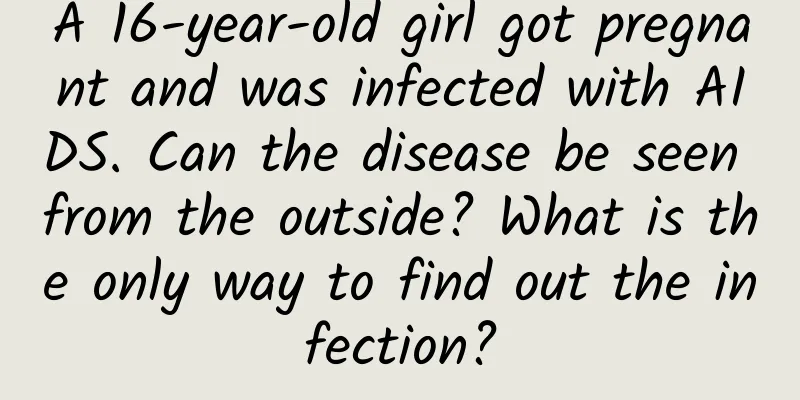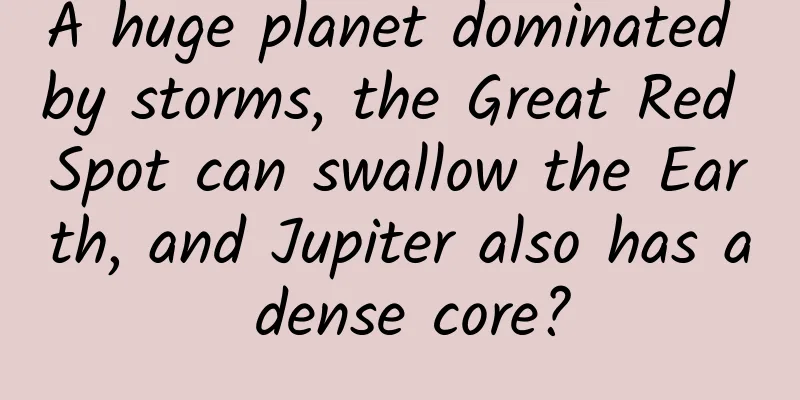Cao Yuan made another major breakthrough and published two results in succession, and the four-layer "magic angle" twisted graphene was born!

|
[Mobile software: BoKeYuan] Graphene is composed of a single layer of carbon atoms connected in a hexagonal honeycomb shape. It has a simple structure and looks very delicate. Since its discovery in 2004, scientists have found that graphene is actually very strong. Although graphene is not a metal, its ultra-high conductivity is better than most metals. In 2018, MIT scientists led by Cao Yuan (a Chinese scholar and MIT doctoral student (I believe everyone is quite familiar with Cao Yuan’s name, so I will not repeat it here in BoKeYuan, and we will focus on the new research results)) and Pablo Jarillo-Herrero discovered that: When two sheets of graphene are stacked together at a slightly offset "magic angle," this new "twisted" bilayer graphene structure can become either an insulator, completely blocking current from flowing through the material, or a superconductor, allowing electrons to flow through without resistance. This is a monumental discovery that also helped open up a new field called "twisted electronics," which studies the behavior of electrons in twisted bilayer graphene and other materials. Now, scientists including MIT's Yuan Cao have published two new research papers in the journal Nature, reporting their latest breakthroughs and progress in graphene bidirectional electronics. The first study by Cao Yuan et al. MIT researchers including Cao Yuan and collaborators at the Weizmann Institute of Science have for the first time imaged and mapped an entire twisted graphene structure with a resolution fine enough to see small changes in the local twist angle across the structure. The results show areas within the structure where the "magic angle" between graphene layers deviates slightly from the average by 1.1 degrees. The team detected these changes at an ultra-high angular resolution of 0.002 degrees, which is equivalent to being able to see the angle of an apple relative to the horizon from a mile away. The study found that structures with a narrow range of angle variations had more pronounced exotic properties, such as insulation and superconductivity, than structures with a wider range of twist angles. "This is the first time that we've mapped the entire device to understand the twist angles in a given area of the device," says Jarillo-Herrero, the Cecil and Ida Green Professor of Physics at MIT. "We found that you can have a little variation and still exhibit superconductivity and other exotic physics, but not too much. Now we've characterized how much twist variation you can have, and what the degenerate effects are when there's too much." The second study by Cao Yuan et al. Cao Yuan and other researchers created a new twisted graphene structure with four layers of graphene instead of two. The study observed that the new four-layer "magic angle" structure is more sensitive to certain electric and magnetic fields than its two-layer predecessor. This shows that researchers can more easily and controllably study the exotic properties of "magic angle" graphene in a four-layer system. Cao Yuan, a Chinese scholar and doctoral student at MIT, said: The purpose of these two studies is to better understand the puzzling physical behavior of "magic angle" dual electronic devices. Once understood, physicists believe these devices could help design and engineer a new generation of high-temperature superconductors, topological devices for quantum information processing, and low-energy technologies. Ever since Cao and his team first discovered magic-angle graphene, their scientists have jumped at the chance to observe and measure its properties. Several research groups have imaged the graphene magic-angle structure using scanning tunneling microscopy (STM), a technique that scans a surface at the atomic level. Like wrinkles on plastic wrap However, using this method, the researchers could only scan small areas of "magic-angle" graphene, at most a few hundred square nanometers. "Looking at millions of atoms with an entire micrometer-scale structure is not what a scanning tunneling microscope is best suited for," said Pablo Jarillo-Herrero, Cao's MIT co-author. "It can be done in theory, but it takes a lot of time." So the MIT team consulted researchers at the Weizmann Institute of Science, who developed a scanning technique called "scanning nano-SQUID," where SQUID stands for superconducting quantum interference device. A traditional superconducting quantum interference device resembles a small bisected ring, with the two halves made of superconducting material and connected by two junctions. Mounted on the tip of a device similar to a scanning tunneling microscope (STM), a SQUID can measure magnetic fields flowing through a ring sample on a microscopic scale, but the Weizmann Institute researchers have scaled down the SQUID design to sense magnetic fields at the nanoscale. When "magic angle" graphene is placed in a small magnetic field, it generates a persistent electric current in the structure due to the formation of so-called "Landau levels." For example, these Landau levels and persistent currents are very sensitive to the local twist angle, causing the magnetic field to have different sizes depending on the precise value of the local twist angle. In this way, the nano-SQUID technology can detect areas with tiny shifts away from 1.1 degrees. "It turns out that this is an amazing technology that can capture tiny angle changes of less than 0.002 degrees away from 1.1 degrees, which is very good for mapping "magic angle" graphene," said Pablo Jarillo-Herrero, co-author of the study with Cao Yuan at MIT. The research team used this technology to map two "magic angle" structures: one with a smaller range of twist changes and one with a larger range. The study puts one sheet of graphene on top of another, similar to putting plastic wrap on plastic wrap. You would expect wrinkles, and the two layers will be a little twisted, and some not so twisted, just like what the researchers saw in graphene. The study found that structures with a narrow range of twist changes have more obvious exotic physical properties, such as superconductivity, compared to structures with more twist changes. Chinese scholar and MIT doctoral student Cao Yuan said: Now that we can directly see these local twist changes, it is interesting to study how to design changes in twist angles to achieve different quantum phases in the device. Tunable Physics Over the past two years, Cao and other researchers have experimented with different pairings of graphene and other materials to see if twisting them at specific angles would lead to exotic physical behaviors, and whether the fascinating physics of "magic-angle" graphene would hold up if the structure was scaled up to offset not two, but four layers of graphene. Since graphene was discovered nearly 15 years ago, a wealth of information has been revealed about its properties, not just as a thin film, but also when stacked and arranged in multiple layers (i.e., a structure similar to that found in graphite or pencil lead). Bilayer graphene (two layers at a 0-degree angle to each other) is a system whose properties are now well understood by researchers, and theoretical calculations have shown that in a bilayer-on-top structure, interesting physics occurs at a greater range of angles. Therefore, this type of structure may be more suitable in terms of making devices. Inspired in part by this theoretical possibility, the researchers made a new magic-angle structure that offset one graphene bilayer from the other by 1.1 degrees. They then connected this new "bilayer" twisted structure to a battery, applied a voltage, and measured the current that flowed when the structure was placed under various conditions, such as magnetic fields and perpendicular electric fields. Like the "magic angle" structure made of two layers of graphene, this new four-layer graphene structure shows a strange insulating behavior. But uniquely, the researchers were able to tune this insulation up and down with an electric field, which is impossible with double-layer magic angle graphene. Chinese scholar and MIT doctoral student Cao Yuan said: This system is highly tunable, which means we have a lot of "control", which will allow us to study things that cannot be understood with a single layer of "magic angle" graphene. It is still in the early stages of this field, and for now, the physics community is still fascinated by its phenomena. Boco Park | Research/From: Massachusetts Institute of Technology |
Recommend
How to make a video of Russian beauties and Ukrainian beauties holding signs to express their blessings?
You want creativity, you want innovation, and you...
Excellent! The driver's scientific operation saved 19 passengers!
Recently, Zhuzhou, Hunan Beijing-Hong Kong-Macao ...
How effective is Sogou bidding? Is Sogou’s account opening promotion effective?
When it comes to search engine bidding promotion,...
The Ministry of Industry and Information Technology plans to stipulate that APPs cannot update themselves without the user's consent
[[395950]] News on April 26: Today, it was learne...
Sichuan Rural Pension Insurance: What details of SEO optimization affect the search engine's crawling frequency?
Colleagues and companies doing optimization know ...
Can Valve's pre-sale of handheld consoles be a catalyst for Steam's development?
Players who are familiar with PC games are also f...
Live broadcast process planning and promotion methods!
Live streaming e-commerce is like a super “human ...
Alipay has made the right move by entering the social networking market through social networking
For Alipay , it is neither trying to build a comm...
What to do if an accident occurs during outdoor activities? Safety first, mission second
On the morning of November 22, after several days...
The establishment of the fourth operator of the State Grid may promote the development of 4K TV
In recent years, there have been more news report...
WeChat Mini Programs are popular. I have summarized the 4 best ways to learn mini programs by yourself in terms of product and operation.
With the public beta release of WeChat Mini Progr...
The future of Google Glass: There may still be hope in the business world
After two years of development, wearable devices ...
Chen Dahei Niu_Offline practical class for live streaming in September: how to start a live streaming account, how to play the Qianchuan system, ideas for paid account creation, etc.
Course Description: The course comes from Chen Da...
Interpretation of the 2018 Mobile App Advertising Data Year-end Report!
Public data shows that global mobile application ...
It is said online that constipation can cause colorectal cancer. Is this true?
When it comes to constipation, many people have t...









